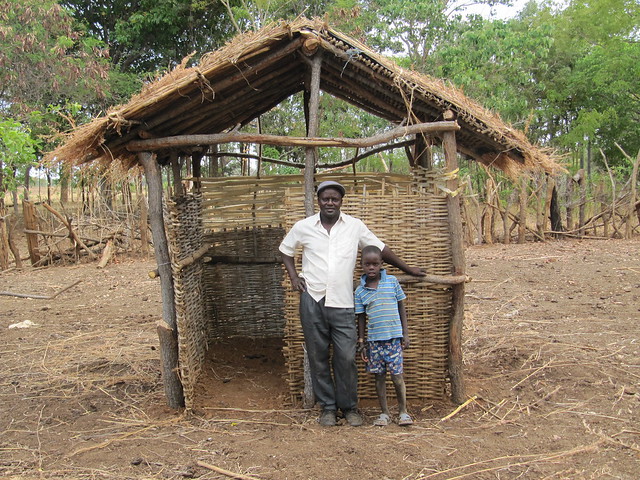Improved manure management – getting more from a limited resource

In the cropping season of 2015/2016, Africa RISING expanded its work in Zambia under the Sustainable Intensification theme to trials on improved manure handling. This work is led by Grassroots Trusts in collaboration with CRS. Many smallholder farmers across the world rely on livestock manure as a cheap and effective source of the nutrients required for crop growth. The use of manure can also bring other benefits to soil function, such as improved soil biological activity, increased water holding capacity, increased infiltration rates, and improved soil structure.
It is perceived that the main constraints farmers face in terms of manure use are: a) the availability of manure in sufficient quantity and b) the labor associated with hauling and applying manure in the field. The standard recommendation for manure application in Southern Africa for cereals such as maize and sorghum is somewhere between 10 and 20 t/ha, which is equivalent to the manure of 10-20 fully grown cattle. Very few farmers have access to this quantity of manure, even when it is applied on a rotational basis. The basis for current recommendations has its root in the theory of nutrient replacement. Indeed analysis of farm yard manure (FYM) reveals very low nutrient content in comparison to the nutrients found in fresh manure.
Over the past two decades, there have been studies that indicate that manure handling methods have a huge impact on the final nutrient content of FYM. Overall increases in nutrient content of FYM are basically due to protection from volatilization and leaching. Other studies also suggest that timing and placement of manure can have a significant influence on crop response and overall crop yield. Grassroots Trust has had good results both on their research farm and with on-farm trials in central Zambia.
In line with these recent insights, trials were designed to inform farmers about best practices regarding efficient and effective manure management for cattle, goats, and pigs in Eastern Province of Zambia. Mr Osward Ngombe a farmer from Kwenje camp, Chipata District commented: “We are interested to see if there is any difference between our manure and manure managed this new way―we thought manure was manure”.
In the first phase of this project 12 farmers were selected through the CRS-MAWA program to participate in on-farm “improved manure management” for a two-year period. Training was carried out by Grassroots Trust on manure storage and in field management for the 12 farmers and eight CRS-MAWA staff. Each farmer built a facility for improved manure storage. These storage facilities were built with local materials and some plastic sheeting and nails.
Validation plots were selected by farmers and CRS-MAWA staff. These trial plots will measure the differences in manure management efficiency between manure which has been managed using traditional management methods and those proposed by Grassroots Trust. First results from this work are expected in the 2016/2017 cropping season.
By Sebastian Scott
Originally produced in August 2016




